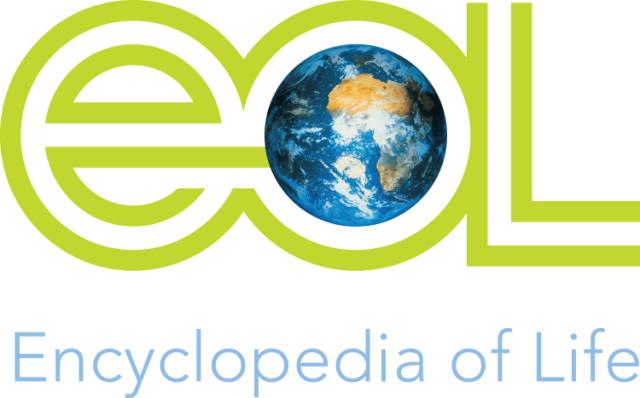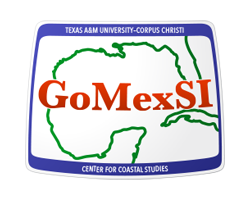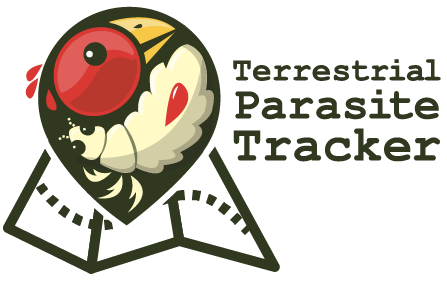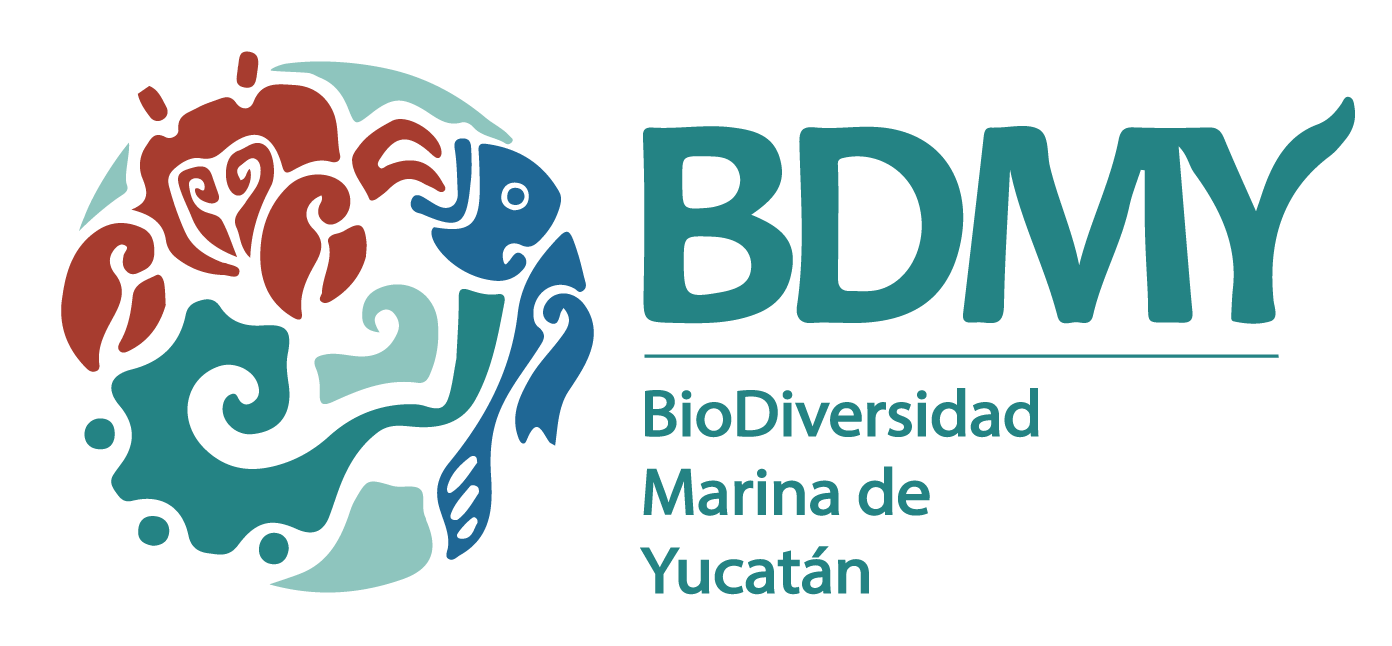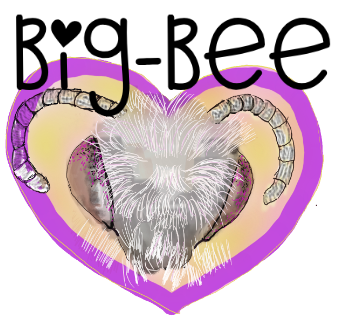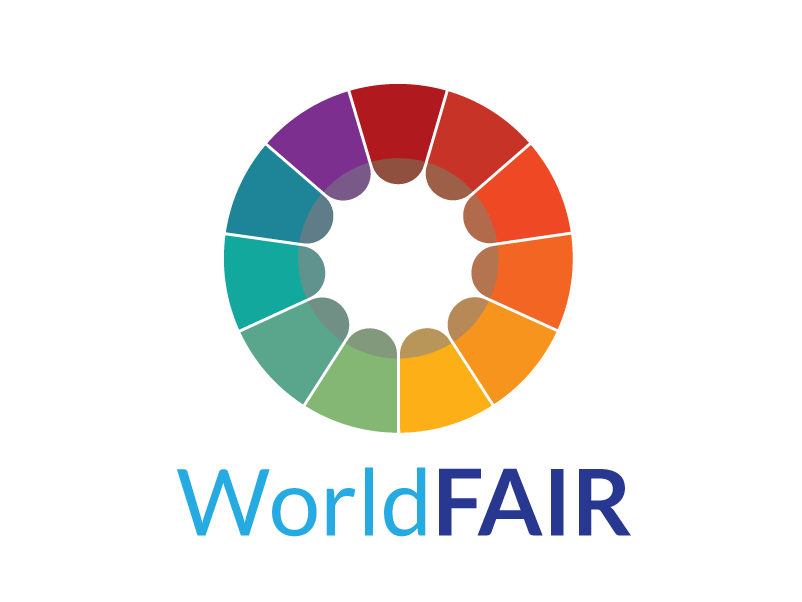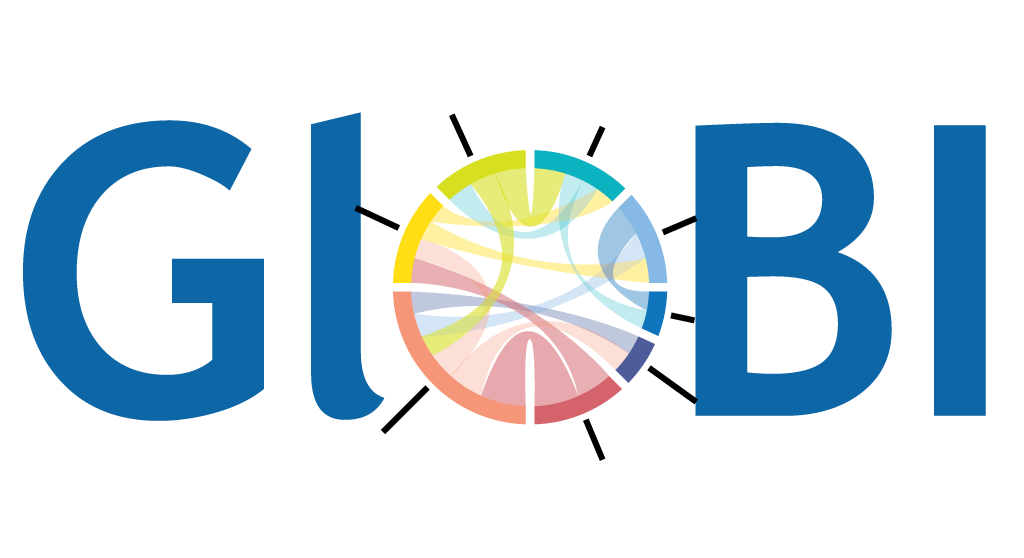In case you are wondering... What is GloBI?, Why GloBI?, Who makes GloBI possible?, How does GloBI work?, How to share data through GloBI?, GloBI in the wild, How to use GloBI as an educational tool?, How to cite GloBI?, Who cited GloBI? and Who partners with GloBI?
What is GloBI?
Global Biotic Interactions (GloBI) provides open access to finding species interaction data (e.g., predator-prey, pollinator-plant, pathogen-host, parasite-host) by combining existing open datasets using open source software.
Like videos? Then you might like this 2 minute GloBI introduction video.
Why GloBI?
“The various books and journals of ornithology and entomology are like a row of beehives containing an immense amount of valuable honey, which has been stored up in separate cells by the bees that made it. The advantage, and at the same time the difficulty, of ecological work is that it attempts to provide conceptions which can link up into some complete scheme the colossal store of facts about natural history which has accumulated up to date in this rather haphazard manner. This applies with particular force to facts about the food habits of animals. Until more organised information about the subject is available, it is only possible to give a few instances of some of the more clearcut niches which happen to have been worked out.” — Charles Elton, 1927. Animal Ecology. pp 65-66.
“Biodiversity researchers have focused on diversity at the cost of ignoring the networks of interactions between organisms that characterize ecosystems.” — Kevin McCann, 2007
“An essential element of a truly inclusionary and democratic approach to science is to share data through publicly accessible data sets.” — Soranno et al., 2014
“As scientific data users, we take the standpoint that scientific data are not copyrightable and, furthermore, they can be accessed, shared and reused freely. Thus, once legal access has been gained to copyrighted publications, the data within those scholarly publications can be considered to be open data that is freely extractable. This set of recommendations has been reached specifically for scientific use and societal benefits.” — Benichou et al., 2023
Now that folks have mapped the human genome, put a man on the moon, isn't it time to provide easy access to how, when and where organisms interact with each other so that we can better understand and better preserve our ecosystems? Perhaps GloBI can become the OpenStreetMap of ecology: a global map that shows how organisms rely on each other . . .
By providing an infrastructure to capture and share interaction data, individual biologists can focus on gathering new interaction data and analyzing existing datasets without having to spend resources on (re-) building a cyberinfrastructure to do so.
Who makes GloBI possible?
GloBI is made possible by a community of software engineers, bioinformaticists and biologists. Software engineers such as Jorrit Poelen, Göran Bodenschatz, and Robert Reiz collaborate with bioinformaticists like Chris Mungall, data managers like Sarah E. Miller and biologists like Jim Simons, Anne Thessen, Jen Hammock and Brian Hayden to capture, provide access to and use interaction data that is provided by biologists and community scientists around the world. GloBI is sustained by an intricate network of thriving open source, open data and open science communities in addition to receiving donations, grants, awards or being written into grants, including, but not limited to, EOL's EOL Rubenstein Fellows Program (CRDF EOL-33066-13/F33066, 2013) and the David M. Rubenstein Grant (FOCX-14-60988-1, 2014), and the Smithsonian Institution (SI) (T15CC10297-002, 2016). If you would like to contribute to GloBI please visit our contribute page.
How does GloBI work?
GloBI continuously scans existing data infrastructures and registries and tracks the species interactions data they make available. Found species interaction data are then resolved and integrated. So, rather than being a giant centralized repository of species interaction data, GloBI is more of a search index that helps to find existing species interaction datasets in their native cyber-habitat. For more information about how GloBI works, please visit the Data Integration Process page.
How to share data through GloBI?
GloBI exists because of people like yourself who share their interaction data, or refer to existing datasets that are not yet included in GloBI. Do you have some interaction data you'd like to access through GloBI? Please read this.
How to use GloBI as an educational tool?
Partner collaborators at the Encyclopedia of Life have developed tools to better understand food webs in specific and ecosystems in general. Also, Daniela Baron et al. created an Interactive Ecosystem Explorer for high school students. In addition, many other educational resources exist including, but not limited to, hhmi's Trophic Cascades and Earth Viewer. Ideally, GloBI will help facilitate to create, and improve, these openly accessible educational resources.
How to cite GloBI?
GloBI is made possible by researchers, collections, projects and institutions openly sharing their datasets. When using this data, please make sure to attribute these original data contributors, including citing the specific datasets in derivative work. Each species interaction record indexed by GloBI contains a reference and dataset citation. If you have ideas on how to make it easier to cite original datasets, please open/join a discussion.
To credit GloBI for more easily finding interaction data, please use to following citation to reference GloBI:
Jorrit H. Poelen, James D. Simons and Chris J. Mungall. (2014). Global Biotic Interactions: An open infrastructure to share and analyze species-interaction datasets. Ecological Informatics. https://doi.org/10.1016/j.ecoinf.2014.08.005.
In addition, if you'd like to visually reference GloBI, please don't hesitate to use the GloBI logo collection created by Pepper Luboff.
Who cited GloBI?
(ordered by year, author)- Camargo-Sanabria, A. A. et al., 2025. Ecological Interactions of Terrestrial Mammals in the Chihuahuan Desert: A Systematic Map Mammal Review. doi:10.1111/mam.70001
- Beauchesne, D. et al., 2025. Ecological interactions amplify cumulative effects in marine ecosystems Science. doi:10.1126/sciadv.adp9315
- Devalez, J. et al., 2025. Annotated checklist of the bees of bonaire, with a focus on host plants (Anthophila) Nederlandse Faunistische Mededelingen. doi: https://natuurtijdschriften.nl/pub/1026875
- Gao, H. et al., 2025. Distribution patterns and environmental factors influencing Nymphalidae and Salticidae diversity in the Wuzhishan area of Hainan iScience. doi:10.1016/j.isci.2025.112238
- Hao, X. et al., 2025. Global Projection of Terrestrial Vertebrate Food Webs Under Future Climate and Land-Use Changes Global Change Biology. doi:10.1111/gcb.70061
- Kau, M., et al., 2025. Umbrella, keystone, or flagship? An integrated framework for identifying effective surrogate species Biological Conservation. doi:10.1016/j.biocon.2025.111025
- Lanuza, J.B., et al., 2025. EuPPollNet: A European Database of Plant-Pollinator Networks Global Ecology and Biogeography. doi:10.1111/geb.70000
- Lee, M. et al., 2025. Restored streams recover food web properties but with different scaling relationships when compared with natural streams Ecological Applications. doi:10.1002/eap.70017
- Pertierra, L.R., et al., 2025. Advances and shortfalls in knowledge of Antarctic terrestrial and freshwater biodiversity Science. doi:10.1126/science.adk2118
- Russo, L. et al., 2025. The Spatiotemporal Variability of Marine Plankton Ecosystem Services at the Regional Scale: A Combined Approach Using a Systematic Review and Network Analysis Sustainability. doi:10.3390/su17031182
- Smith, C. et al., 2025. Pollen specialist bee species are accurately predicted from visitation, occurrence and phylogenetic data Oecologia. doi:10.1007/s00442-024-05653-5
- Sousa da Silva, A.T., et al., 2025. Diversity patterns and knowledge gaps of Atlantic Forest epiphyllous bryophytes: a highly neglected group Annals of Botany. doi:10.1093/aob/mcaf007
- Adhurya, S. et al., 2024. KF-metaweb: A trophic metaweb of freshwater ecosystems of South Korea Global Ecology and Biogeography. doi:10.1111/geb.13845
- Antunes, A.N. et al., 2024. Linking biodiversity, ecosystem function, and Nature’s contributions to people: a macroecological energy flux perspective Trends in Ecology & Evolution. doi:10.1016/j.tree.2024.01.004
- Bellardini, D. et al., 2024. Spatiotemporal changes of pelagic food webs investigated by environmental DNA metabarcoding and connectivity analysis. Philosphical Transactions of the Royal Society B. doi:10.1098/rstb.2023.0178
- Blanc-Benigeri, A., 2024. Diet of moulting Swainson's Thrushes (Catharus ustulatus) and Tennessee Warblers (Leiothlypis peregrina) at a stopover site during fall migration measured with fecal DNA metabarcoding. Scientific Reports. doi:10.1038/s41598-024-59462-0
- Carvalho, A.N. et al., 2024. Not armoured enough: The black-and-white tegu Salvator merianae (Squamata: Teiidae) as a predator of armadillos (Cingulata) Food Webs. doi:10.1016/j.fooweb.2024.e00380
- Cicero, C. et al., 2024. Arctos: Community-driven innovations for managing natural and cultural history collections PLOS ONE. doi:10.1371/journal.pone.0296478
- Chen, C. et al., 2024. Stability of ecological systems: A theoretical review Physics Reports. doi:10.1016/j.physrep.2024.08.001
- Cheng, S. et al., 2024. Potential Impact of DOM on Fish Biodiversity in the Jinshui River Basin Environment Fishes. doi:10.3390/fishes9120489
- Drucker, D.P. et al., 2024. Collectively Working towards Plant-Pollinator Interactions Data Interoperability and Reuse: Lessons Learned from the WorldFAIR Project. Biodiversity Information Science and Standards. doi:10.3897/biss.8.141109
- Eichenwalt, A.J. et al., 2024. Potential extinction cascades in a desert ecosystem: Linking food web interactions to community viability Ecology and Evolution. doi:10.1002/ece3.10930
- Elliott, M.J. and Fortes, J.A.B, 2024. Toward Reliable Biodiversity Information Extraction From Large Language Models 2024 IEEE 20th International Conference on e-Science (e-Science). doi:10.1109/e-Science62913.2024.10678666
- Feng, X. et al., 2024. Rethinking ecological niches and geographic distributions in face of pervasive human influence in the Anthropocene Biological Reviews. doi:10.1111/brv.13077
- Fenn-Moltu, G. et al., 2024. Pathways for accidental biocontrol: The human‐mediated dispersal of insect predators and parasitoids Ecological Applications. doi:10.1002/eap.3047
- Funabashi, M. et al., 2024. Scale-Free Correction of Under-/Over-Reported Biases in Global Biotic Interaction Network 2024 World Conference on Complex Systems (WCCS), Mohammedia, Morocco, 2024. doi:10.1109/WCCS62745.2024.10765545
- Giannakis K., et al., 2024. Ecological Predictors of Organelle Genome Evolution: Phylogenetic Correlations with Taxonomically Broad, Sparse, Unsystematized Data Systematic Biology. doi:10.1093/sysbio/syae009
- Grey, H.L. et al., 2024. Diet specialization mediates drivers of Cucurbita herbivory in a semi-arid agroecosystem Current Research in Insect Science. doi:10.1016/j.cris.2024.100087
- Heptinstall, T.C. et al., 2024. Size Doesn't Matter: Body Size is Not Linked to Diet Specialization in Garter Snakes (Squamata: Natricidae: Thamnophis) Herpetologica. doi:10.1670/23-048
- Katili, M.Z. et al., 2024. Leveraging Biotic Interaction Knowledge Graph and Network Analysis to Uncover Insect Vectors of Plant Virus Journal of Information Systems Engineering and Business Intelligence. doi:10.20473/jisebi.10.1.94-109
- Lee, M. et al., 2024. Development of a link extrapolation-based food web model adapted to Korean stream ecosystems Korean Journal of Environmental Biology. doi:10.11626/KJEB.2024.42.2.207
- Lertzman-Lepofsky, G. et al., 2024. Temporal changes in taxon abundances are positively correlated but poorly predicted at the global scale Ecography. doi:10.1111/ecog.07195
- Mansour, A. et al., 2024. Checklist of monogeneans from Egyptian marine fishes, including some newly collected species Systematic Parasitology. doi:10.1007/s11230-024-10150-7
- Marshall, L. et al., 2024. Understanding and addressing shortfalls in European wild bee data Biological Conservation. doi:10.1016/j.biocon.2024.110455
- Moretti, P.F. et al., 2024. A Process-Based Approach to Guide the Observational Strategies for the Assessment of the Marine Environment Sustainability. doi:10.3390/su16198335
- Ospina, A. et al., 2024. The sweet path of Hansel and Gretel: pollination system of Masdevallia hortensis (Orchidaceae: Pleurothallidinae) in a cloud montane forest of the Cordillera Occidental, in Colombia Plant Systematics and Evolution. doi:10.1007/s00606-024-01924-z
- Russo, L. et al., 2024. Zoom into a twilight zone: a biodiversity survey of the Dohrn Canyon (Mediterranean sea) through environmental DNA metabarcoding Community Ecology. doi:10.1007/s42974-024-00207-4
- Savage, A.M. et al., 2024. Online toolkits for collaborative and inclusive global research in urban evolutionary ecology Ecology and Evolution. doi:10.1002/ece3.11633
- Super, L. et al., 2024. Studying Phytobiomes as Complex Systems: A New Framework for Learners to Scaffold Understanding The Plant Health Instructor. doi:10.1094/PHI-F-2023-06-0006
- Thyrring, J. et al., 2024. Shallow coverage in shallow waters: the incompleteness of intertidal species inventories in biodiversity database records Ecography. doi:Ecography 10.1111/ecog.07006
- Tsevenda, C. A. et al., 2024. Food and Feeding Habits of Three Selected Fish Species of Lower River Benue, Benue State, Nigeria Nigerian Journal of Fisheries and Aquaculture. doi: https://www.nijfaq.com.ng/index.php/ojs-nijfaq/article/download/148/123
- Ballare, K.M. et al., 2023. Environmental DNA reveals invasive crayfish microbial associates and ecosystem‐wide biodiversity before and after eradication Environmental DNA. doi:10.1002/edn3.445
- Borrelli, J.J. et al., 2023. Putting a lake together: Integrating synthetic data and field observations to build a better food web Food Webs. doi:10.1016/j.fooweb.2023.e00315
- Caufield, H.J. et al., 2023. KG-Hub - Building and Exchanging Biological Knowledge Graphs Bioinformatics. doi:10.1093/bioinformatics/btad418
- Copoiu, D.S. and Purcărea, C, 2023. First report on the presence of *Botanophila fugax* (Meigen 1826) (Diptera: Anthomyiidae) in Romania.. doi:Romanian Journal of Biology - Zoology
- Doherty, S. et al., 2023. Estimating co‐extinction threats in terrestrial ecosystems Global Change Biology. doi:10.1111/gcb.16836
- Elliott, M.J. et al., 2023. Signing data citations enables data verification and citation persistence Scientific Data. doi:10.1038/s41597-023-02230-y
- Gerber, G. et al., 2023. Automated workflow for incorporation and evaluation of data uncertainty in ecological networks with autoLIMR Ecological Informatics. doi:10.1016/j.ecoinf.2023.102375
- Gippet, J.M.W. et al., 2023. The global risk of infectious disease emergence from giant land snail invasion and pet trade Parasites & Vectors. doi:10.1186/s13071-023-06000-y
- Lee, M. et al., 2023. Impacts of the accumulated extinction of endangered species on stream food webs Global Ecology and Conservation. doi:10.1016/j.gecco.2023.e02747
- Le Guillarme, N. and Thuiller, W., 2023. A practical approach to constructing a knowledge graph for soil ecological research European Journal of Soil Biology. doi:10.1016/j.ejsobi.2023.103497
- Liewelyn, J., et al., 2023. Predicting predator-prey interactions in terrestrial endotherms using random forest Ecography. doi:10.1111/ecog.06619
- Lippi, C.A., et al., 2023. Characterizing the Vector Data Ecosystem Journal of Medical Entomology. doi:10.1093/jme/tjad009
- Martinez, ND, 2023. Predicting ecosystem metaphenome from communitymetagenome: A grand challenge for environmental biology Ecology and Evolution. doi:10.1002/ece3.9872
- Nava-Bolaños, A., et al., 2023. Critical areas for pollinator conservation in Mexico: A cross-border priority Biological Conservation. doi:10.1016/j.biocon.2023.110119
- Ohlmann, M. et al., 2023. metanetwork: A R package dedicated to handling and representing trophic metanetworks Ecology and Evolution. doi:10.1002/ece3.10229
- Olivier, P.E.N. et al., 2023. A network of biological traits: Profiling consumer-resource interactions Food Webs. doi:10.1016/j.fooweb.2023.e00333
- Pacheco, A.R. and Vorholt, J.A., 2023. Resolving metabolic interaction mechanisms in plant microbiomes Current Opinion in Microbiology. doi:10.1016/j.mib.2023.102317
- Reynoso-García, J. et al., 2023. Edible flora in pre-Columbian Caribbean coprolites: Expected and unexpected data PLOS ONE. doi:10.1371/journal.pone.0292077
- Salim, J.A., 2023. Unificando dados de interações bióticas: terminologia, análise de dados, padronização e proposta de um esquema de dados para interações planta-polinizador./ Unifying biotic interactions data: terminology, data analysis, standardization, and proposal of a data schema for plant-pollinator interactions. Universidade de São Paulo. Agência de Bibliotecas e Coleções Digitais. doi:10.11606/t.3.2023.tde-03012024-110904
- Sánchez-Barradas, A. et al., 2023. Combining Geographic Distribution and Trait Information to Infer Predator-Prey Species-Level Interaction Properties Diversity. doi:10.3390/d15010061
- Sterner, B. et al., 2023. Unified and pluralistic ideals for data sharing and reuse in biodiversity Database. doi:10.1093/database/baad048
- Sullivan, K.A. et al., 2023. Building a community-based taxonomic resource for digitization of parasites and their hosts Insect Systematics and Diversity. doi:10.1093/isd/ixad023
- Wyckhuys, K. A. et al., 2023. Legume integration for biological control deserves a firmer scientific base. Outlook on Agriculture. doi:10.1177/00307270231194086
- Qin, S. et al., 2023. eDNA-based diversity and multitrophic network reveal the effects of land use and pollutants on the subtropical Dongjiang River systems Environmental Pollution. doi:10.1016/j.envpol.2023.122157
- Campos-Cerda, F. et al., 2022. Eggshell microbiome as a potential microbial reservoir in a cavity nesting bird Journal of Ornithology. doi:10.1007/s10336-022-02028-6
- Carlson, C.J. et al., 2022. The Global Virome in One Network (VIRION): an Atlas of Vertebrate-Virus Associations B. E. Pickett & K. Jurado, eds. mBio. doi:10.1128/mbio.02985-21
- Caron, D, Maiorano, L, Thuiller, W, Pollock, LJ, 2022. Addressing the Eltonian shortfall with trait‐based interaction models. Ecology Letters. doi:10.1111/ele.13966
- Cruz‐Laufer, A.J. et al., 2022. Explosive networking: The role of adaptive host radiations and ecological opportunity in a species‐rich host–parasite assembly. Ecology Letters. doi:10.1111/ele.14059
- Doncheva, N.T. et al., 2022. Cytoscape stringApp 2.0: Analysis and Visualization of Heterogeneous Biological Networks Journal of Proteome Research. doi:10.1021/acs.jproteome.2c00651
- Eisenhauer, N. et al., 2022. Frontiers in soil ecology—Insights from the World Biodiversity Forum 2022 Journal of Sustainable Agriculture and Environment. doi:10.1002/sae2.12031
- Folegatti, P.M. et al., 2022. Vaccines based on the replication-deficient simian adenoviral vector ChAdOx1: Standardized template with key considerations for a risk/benefit assessment. Vaccine. doi:10.1016/j.vaccine.2022.06.008
- Fricke, E.C. et al., 2022. Collapse of terrestrial mammal food webs since the Late Pleistocene Science. doi:10.1126/science.abn4012
- Girón, J.C. et al., 2022. Enhanced monography in a collaboratively evolved hub for systematic biology. Bulletin of the Society of Systematic Biologists. doi:10.18061/bssb.v1i1.8340
- Han, D. et al., 2022. Microhabitat preferences of butterflies in urban parks: both vegetation structure and resources are decisive. Urban Forestry & Urban Greening. doi:10.1016/j.ufug.2022.127552
- Kita, C.A. et al., 2022. Ten simple rules for reporting information on species interactions PLoS Computational Biology. doi:10.1371/journal.pcbi.1010362
- Llewelyn, J. et al., 2022. Sahul's megafauna were vulnerable to plant-community changes due to their position in the trophic network. Ecography. doi:10.1111/ecog.06089
- Manca, F. et al., 2022. Unveiling the complexity and ecological function of aquatic macrophyte–animal networks in coastal ecosystems. Biological Reviews. doi:10.1111/brv.12842
- Motta, C.I., Luong, J.C. & Seltmann, K.C., 2022. Plant–arthropod interactions of an endangered California lupine. Ecology and Evolution. doi:10.1002/ece3.8688
- Nava-Bolaños, A. et al., 2022. Estado del arte del conocimiento de biodiversidad de los polinizadores de México. State of the art of knowledge of pollinators biodiversity in Mexico. Revista Mexicana de Biodiversidad. doi:10.22201/ib.20078706e.2022.93.3948 http://www.revista.ib.unam.mx/index.php/bio/article/view/3948/4414
- Pacheco, A.R, et al., 2022. Toward FAIR Representations of Microbial Interactions mSystems. doi:10.1128/msystems.00659-22
- Paragkamian, S. et al., 2022. Automating the Curation Process of Historical Literature on Marine Biodiversity Using Text Mining: The DECO Workflow. Frontiers in Marine Science. doi:10.3389/fmars.2022.940844
- Porter, T.M. & Hajibabaei M., 2022. MetaWorks: A flexible, scalable bioinformatic pipeline for high-throughput multi-marker biodiversity assessments PLOS ONE. doi:10.1371/journal.pone.0274260
- Robinson, C.V., et al., 2022. Multi-marker metabarcoding resolves subtle variations in freshwater condition: Bioindicators, ecological traits, and trophic interactions Ecological Indicators. doi:10.1016/j.ecolind.2022.109603
- Strona, G. and Corey J.A. Bradshaw, 2022. Coextinctions dominate future vertebrate losses from climate and land use change Science Advances. doi:10.1126/sciadv.abn4345
- Tedersoo, L. et al., 2022. Best practices in metabarcoding of fungi: From experimental design to results. Molecular Ecology. doi:10.1111/mec.16460
- Windsor, F.M. et al., 2022. Using ecological networks to answer questions in global biogeography and ecology. Journal of Biogeography. doi:10.1111/jbi.14447
- Woo, S.Y. et al., 2022. Exploring the predation of large land snails using preyed shell remains from rock anvil sites in a tropical limestone rainforest in Malaysia. Biodiversity Data Journal. doi:10.3897/BDJ.10.e90063
- Bachelder, N. R, Chen, A., Zoe, F., Rapaport, M. K, Bang, J., Solomon, S. J, et al., 2021. Leveraging Large Biological Interaction Data to Quantify Plant Specialization by Bees. This poster was presented during the LB 40: "Vital Connections in Ecology: Breakthroughs in Understanding Species Interactions 2"Thursday, August 5 Ecological Society of America Meeting, Virtual Meeting, 2021 UC Santa Barbara: Cheadle Center for Biodiversity and Ecological Restoration. doi: https://escholarship.org/uc/item/33b2t2bq
- Baltoumas, F. A, et al., 2021. Biomolecule and Bioentity Interaction Databases in Systems Biology: A Comprehensive Review. Biomolecules. doi:10.3390/biom11081245
- Beauchesne, D. et al., 2021. On the sensitivity of food webs to multiple stressors T. Wootton, ed. Ecology Letters. doi:10.1111/ele.13841
- Bloor, J.M.G. et al., 2021. Analysis of complex trophic networks reveals the signature of land-use intensification on soil communities in agroecosystems. Scientific Reports. doi:10.1038/s41598-021-97300-9
- Chaffron, S. et al., 2021. Environmental vulnerability of the global ocean epipelagic plankton community interactome. Science Advances. doi:10.1126/sciadv.abg1921
- Del Risco, A.A., Montoya, Á.M., García, V. et al, 2021. Data synthesis and dynamic visualization converge into a comprehensive biotic interaction network: a case study of the urban and rural areas of Bogotá D.C.. Urban Ecosystems. doi:10.1007/s11252-021-01133-3
- Feng, X., Qiao, H. & Schrodt, F., 2021. Accounting for dispersal using simulated data improves understanding of species abundance patterns. Global Ecology and Biogeography. doi:10.1111/geb.13412
- Funabashi, M. and Minami, T., 2021. Dynamical assessment of aboveground and underground biodiversity with supportive AI Measurement: Sensors. doi:10.1016/j.measen.2021.100167
- Gibb, R. et al., 2021. Data Proliferation, Reconciliation, and Synthesis in Viral Ecology. BioScience. doi:10.1093/biosci/biab080
- Groom, Q. et al., 2021. Holistic understanding of contemporary ecosystems requires integration of data on domesticated, captive and cultivated organisms. Biodiversity Data Journal. doi:10.3897/bdj.9.e65371
- Groom, Q. et al., 2021. Species interactions: next‐level citizen science. Ecography. doi:10.1111/ecog.05790
- Heberling, J.M. et al., 2021. Data integration enables global biodiversity synthesis. Proceedings of the National Academy of Sciences. doi:10.1073/pnas.2018093118
- Keppel, G. et al., 2021. Synthesizing tree biodiversity data to understand global patterns and processes of vegetation. Journal of Vegetation Science. doi:10.1111/jvs.13021
- Le Guillarme, N., et al., 2021. Building a Trophic Knowledge Graph to Support Soil Food Web Reconstruction. S4BioDiv 2021: 3rd International Workshop on Semantics for Biodiversity, held at JOWO 2021: Episode VII The Bolzano Summer of Knowledge, 2021 September 11–18, Bolzano, Italy . doi: http://ceur-ws.org/Vol-2969/paper2-s4biodiv.pdf
- Nastasi, L. & Deans, A., 2021. Catalogue of Rose Gall, Herb Gall, and Inquiline Gall Wasps (Hymenoptera: Cynipidae) of the United States, Canada and Mexico. Biodiversity Data Journal. doi:10.3897/bdj.9.e68558
- Middleton, O. et al., 2021. CarniDIET 1.0: A database of terrestrial carnivorous mammal diets D. Pincheira‐Donoso, ed. Global Ecology and Biogeography. doi:10.1111/geb.13296
- Pérez-Botello, A. & Simões, N., 2021. Sponge-dwelling fauna: a review of known species from the Northwest Tropical Atlantic coral reefs. Biodiversity Data Journal. doi:10.3897/bdj.9.e63372
- Pinheiro, R., Jorge, L. & Lewinsohn, T., 2021. Classification of Biological Interactions: Challenges in the field and in analysis. Biodiversity Information Science and Standards. doi:10.3897/biss.5.74375
- Pocock, M.J.O., Schmucki, R. & Bohan, D.A., 2021. Inferring species interactions from ecological survey data: A mechanistic approach to predict quantitative food webs of seed feeding by carabid beetles. Ecology and Evolution. doi:10.1002/ece3.8032
- Pozsgai, G. et al. 2021. , 2021. Associations between carabid beetles and fungi in the light of 200 years of published literature. Scientific Data. doi:10.1038/s41597-021-01072-w
- Rock, B.M. & Daru, B.H., 2021. Impediments to Understanding Seagrasses’ Response to Global Change. Frontiers in Marine Science. doi: 10.3389/fmars.2021.608867
- Scharler,U.M. & Borrett S.R., 2021. Network construction, evaluation and documentation: A guideline. Environmental Modelling & Software. doi:10.1016/j.envsoft.2021.105020
- Seltmann, K. et al., 2021. Announcing Big-Bee: An initiative to promote understanding of bees through image and trait digitization. Biodiversity Information Science and Standards. doi:10.3897/biss.5.74037
- Filipi Miranda Soares, Raíssa Yuri Hamanaka, Benildes Coura Moreira dos Santos Maculan. 2021, 2021. Aplicação de metadados na padronização de registros de ocorrência de espécies no contexto da ciência cidadã para a biodiversidade: um estudo de casa. Semantic Interoperability in the Context of Biodiversity Data: A Case Study on the Use of Metadata Standards. Silva, Carlos Guardado da, Revez, Jorge & Corujo, Luís (Eds.). Organização do Conhecimento no Horizonte 2030: Desenvolvimento Sustentável e Saúde: Atas do V Congresso ISKO Espanha-Portugal, Universidade de Lisboa. Faculdade de Letras, 25 e 26 de novembro de 2021. Lisboa: Centro de Estudos Clássicos, Colibri. pp. 179. . doi: https://estudogeral.sib.uc.pt/bitstream/10316/96925/1/2021-MACEDO_SILVA_FREITAS_ISKO2021.pdf
- Strona, G., Beck, P.S.A., Cabeza, M. et al. , 2021. Ecological dependencies make remote reef fish communities most vulnerable to coral loss. Nature Communications. doi:10.1038/s41467-021-27440-z
- Strydom, T. et al., 2021. A roadmap towards predicting species interaction networks (across space and time). Philosophical Transactions of the Royal Society B: Biological Sciences. doi:10.1098/rstb.2021.0063
- Stupp, D. et al., 2021. Co-evolution based machine-learning for predicting functional interactions between human genes. Nature Communications. doi:10.1038/s41467-021-26792-w
- Upham, N.S. et al., 2021. Liberating host–virus knowledge from biological dark data. The Lancet Planetary Health. doi:10.1016/s2542-5196(21)00196-0
- An, S. et al., 2020. Scientific Modeling Using Large Scale Knowledge. Artificial Intelligence in Education. doi:10.1007/978-3-030-52240-7_4
- Anderson, R.P. et al., 2020. Optimizing biodiversity informatics to improve information flow, data quality, and utility for science and society. Frontiers of Biogeography. doi:10.21425/f5fbg47839
- Baker, E., Chesmore, D., 2020. Standardisation of bioacoustic terminology for insects. Biodiversity Data Journal. doi: 10.3897/bdj.8.e54222
- Bakker, F.T. et al., 2020. The Global Museum: natural history collections and the future of evolutionary science and public education. PeerJ. doi:10.7717/peerj.8225
- Cook, J.A. et al., 2020. Integrating Biodiversity Infrastructure into Pathogen Discovery and Mitigation of Emerging Infectious Diseases. BioScience. doi:10.1093/biosci/biaa064
- Elmasri, M. et al., 2020. A hierarchical Bayesian model for predicting ecological interactions using scaled evolutionary relationships. The Annals of Applied Statistics. doi:10.1214/19-aoas1296
- Grundler, M., 2020. SquamataBase: a natural history database and R package for comparative biology of snake feeding habits. Biodiversity Data Journal. doi:10.3897/bdj.8.e49943
- Krishnaswamy, V.G., Aishwarya, S. Kathawala, T.M., 2020. Extrication of the Microbial Interactions of Activated Sludge Used in the Textile Effluent Treatment of Anaerobic Reactor Through Metagenomic Profiling. Current Microbiology. doi:10.1007/s00284-020-02020-4
- Minuti, G. et al., 2020. Prospects for the biological control of Iris pseudacorus L. (Iridaceae). Biocontrol Science and Technology. doi:10.1080/09583157.2020.1853050
- Vincent, F. Bowler, C., 2020. Diatoms Are Selective Segregators in Global Ocean Planktonic Communities J. Petersen, ed. mSystems. doi:10.1128/msystems.00444-19
- Wiscovitch-Russo, R. et al., 2020. Pre-Columbian zoonotic enteric parasites: An insight into Puerto Rican indigenous culture diets and life styles D. Hoon Shin, ed. PLOS ONE. doi:10.1371/journal.pone.0227810
- Quinn, B.K., 2020. Potential kleptoparasitism-scavenging interactions between crabs and shell-boring gastropods feeding on bivalve prey: a global survey. Plankton and Benthos Research. doi:10.3800/pbr.15.132
- Webb, T.J. Vanhoorne, B., 2020. Linking dimensions of data on global marine animal diversity. Philosophical Transactions of the Royal Society B: Biological Sciences. doi:10.1098/rstb.2019.0445
- Wu, D., Del Rosario, E.A. Lowry, C., 2020. Exploring the Use of Decision Tree Methodology in Hydrology Using Crowdsourced Data. JAWRA Journal of the American Water Resources Association. doi:10.1111/1752-1688.12882
- Baiser, B. et al., 2019. Ecogeographical rules and the macroecology of food webs M. Fortin, ed. Global Ecology and Biogeography. doi:10.1111/geb.12925
- Baker, E., Dupont, S., Smith, V.S., 2019. Ecological interactions in the Scratchpads virtual research environment. Biodiversity Data Journal. doi:10.3897/bdj.7.e47043
- Cobb, N.S. et al., 2019. Assessment of North American arthropod collections: prospects and challenges for addressing biodiversity research. PeerJ. doi:10.7717/peerj.8086
- Funabashi, M., 2019. Augmentation of Plant Genetic Diversity in Synecoculture: Theory and Practice in Temperate and Tropical Zones. Genetic Diversity in Horticultural Plants. doi:10.1007/978-3-319-96454-6_1
- Hayden, B. et al., 2019. Biological and environmental drivers of trophic ecology in marine fishes - a global perspective. Scientific Reports. doi:10.1038/s41598-019-47618-2
- Hutinet, G. et al., 2019. 7-Deazaguanine modifications protect phage DNA from host restriction systems. Nature Communications. doi:10.1038/s41467-019-13384-y
- Muñoz, G., Kissling, W.D. van Loon, E.E., 2019. Biodiversity Observations Miner: A web application to unlock primary biodiversity data from published literature. Biodiversity Data Journal. doi:10.3897/bdj.7.e28737
- Muñoz, G., Trøjelsgaard, K. Kissling, W.D., 2019. A synthesis of animal-mediated seed dispersal of palms reveals distinct biogeographical differences in species interactions. Journal of Biogeography. doi:10.1111/jbi.13493
- Olivier, P. et al., 2019. Exploring the temporal variability of a food web using long‐term biomonitoring data. Ecography. doi:10.1111/ecog.04461
- Padarian, J., Minasny, B. McBratney, A.B., 2019. Online machine learning for collaborative biophysical modelling. Environmental Modelling & Software. doi:10.1016/j.envsoft.2019.104548
- Rapacciuolo, G. Blois, J.L., 2019. Understanding ecological change across large spatial, temporal, and taxonomic scales: integrating data and methods in light of theory. Ecography. doi:10.1111/ecog.04616.</a>
- Sachs, J. et al., 2019. Training and hackathon on building biodiversity knowledge graphs. Research Ideas and Outcomes. doi:10.3897/rio.5.e36152
- Sharafeldeen, D., Algergawy, A. König-Ries, B., 2019. Towards Knowledge Graph Construction using Semantic Data Mining. Proceedings of the 21st International Conference on Information Integration and Web-based Applications & Services. doi:10.1145/3366030.3366035
- Stucky, B. et al., 2019. Developing a vocabulary and ontology for modeling insect natural history data: example data, use cases, and competency questions. Biodiversity Data Journal. doi:10.3897/bdj.7.e33303
- Urban, M. et al., 2019. PHI-base: the pathogen–host interactions database. Nucleic Acids Research. doi:10.1093/nar/gkz904
- Barbier, M. Loreau, M., 2019. Pyramids and cascades: a synthesis of food chain functioning and stability D. H. Young, ed. Ecology Letters. doi:10.1111/ele.13196
- Delmas, E. et al., 2018. Analysing ecological networks of species interactions. Biological Reviews. doi:10.1111/brv.12433
- Bernasconi, R. et al., 2018. Global Networks of Symbiodinium-Bacteria Within the Coral Holobiont. Microbial Ecology. doi:10.1007/s00248-018-1255-4
- Compson, Z.G. et al., 2018. Linking DNA Metabarcoding and Text Mining to Create Network-Based Biomonitoring Tools: A Case Study on Boreal Wetland Macroinvertebrate Communities. Next Generation Biomonitoring: Part 2. doi:10.1016/bs.aecr.2018.09.001
- Derocles, S.A.P. et al., 2018. Biomonitoring for the 21st Century: Integrating Next-Generation Sequencing Into Ecological Network Analysis. Advances in Ecological Research. doi:10.1016/bs.aecr.2017.12.001
- Gotts, N.M. et al., 2018. Agent-based modelling of socio-ecological systems: Models, projects and ontologies. Ecological Complexity. doi:10.1016/j.ecocom.2018.07.007
- Hutchinson, M.C. et al., 2018. Seeing the forest for the trees: putting multilayer networks to work for community ecology. Functional Ecology. doi:10.1111/1365-2435.13237
- James, S.A. et al., 2018. Herbarium data: Global biodiversity and societal botanical needs for novel research. Applications in Plant Sciences. doi:10.1002/aps3.1024
- Jiang, C. et al., 2018. Dynamic Human Environmental Exposome Revealed by Longitudinal Personal Monitoring. Cell. doi:10.1016/j.cell.2018.08.060
- Kuhn, T. et al., 2018. Nanopublications: A Growing Resource of Provenance-Centric Scientific Linked Data. 2018 IEEE 14th International Conference on e-Science (e-Science). doi:10.1109/escience.2018.00024
- Narango, D.L., Tallamy, D.W. Marra, P.P., 2018. Nonnative plants reduce population growth of an insectivorous bird. Proceedings of the National Academy of Sciences. doi:10.1073/pnas.1809259115
- Röttjers, L. Faust, K., 2018. From hairballs to hypotheses – biological insights from microbial networks. FEMS Microbiology Reviews. doi:10.1093/femsre/fuy030
- Thessen, A.E. et al., 2018. 20 GB in 10 minutes: a case for linking major biodiversity databases using an open socio-technical infrastructure and a pragmatic, cross-institutional collaboration. PeerJ Computer Science. doi:10.7717/peerj-cs.164
- Beauchesne, D. et al., 2017. Thinking outside the box–predicting biotic interactions in data-poor environments. Vie et milieu- Life and Environment. doi: http://wwwphp.obs-banyuls.fr/Viemilieu/index.php/volume-66-2016/66-issue-3-4/663-4-article-11.html
- Coetzer, W., Moodley, D. Gerber, A., 2017. A knowledge-based system for generating interaction networks from ecological data. Data & Knowledge Engineering. doi:10.1016/j.datak.2017.09.005
- Desjardins-Proulx, P. et al., 2017. Ecological interactions and the Netflix problem. PeerJ. doi:10.7717/peerj.3644
- Heitlinger, E. et al., 2017. The Intestinal Eukaryotic and Bacterial Biome of Spotted Hyenas: The Impact of Social Status and Age on Diversity and Composition. Frontiers in Cellular and Infection Microbiology. doi:10.3389/fcimb.2017.00262
- McKinley, D.C. et al., 2017. Citizen science can improve conservation science, natural resource management, and environmental protection. Biological Conservation. doi:10.1016/j.biocon.2016.05.015
- Nielsen, J.M. et al., 2017. Diet tracing in ecology: method comparison and selection. Methods in Ecology and Evolution. doi:10.1111/2041-210x.12869
- Pauli, J.N. et al., 2017. Opinion: Why we need a centralized repository for isotopic data. Proceedings of the National Academy of Sciences. doi:10.1073/pnas.1701742114
- Parr, C.S. Thessen, A.E., 2017. Biodiversity Informatics Ecological Informatics. doi:10.1007/978-3-319-59928-1_17
- Peterson, A.T. Soberón, J., 2017. Essential biodiversity variables are not global. Biodiversity and Conservation. doi:10.1007/s10531-017-1479-5
- Stec, K.F. et al., 2017. Modelling plankton ecosystems in the meta-omics era. Are we ready? Marine Genomics. doi:10.1016/j.margen.2017.02.006
- Parr, C.S. Thessen, A.E., 2017. Biodiversity Informatics. Ecological Informatics. doi:10.1007/978-3-319-59928-1_17
- Adams, J. et al., 2016. A century of Chinook salmon consumption by marine mammal predators in the Northeast Pacific Ocean. Ecological Informatics. doi:10.1016/j.ecoinf.2016.04.010.
- Amano, T., Lamming, J.D.L. & Sutherland, W.J., 2016. Spatial Gaps in Global Biodiversity Information and the Role of Citizen Science. BioScience. doi:10.1093/biosci/biw022
- Basset, A., 2016. e-Science perspectives for the conservation of transitional and coastal wetlands. Aquatic Conservation: Marine and Freshwater Ecosystems. doi:10.1002/aqc.2683
- Buttigieg, P.L. et al., 2016. The environment ontology in 2016: bridging domains with increased scope, semantic density, and interoperation. Journal of Biomedical Semantics. doi:10.1186/s13326-016-0097-6
- Chandler, M. et al., 2016. Contribution of citizen science towards international biodiversity monitoring. Biological Conservation. doi:10.1016/j.biocon.2016.09.004
- Khabibullin, V.F., 2016. Location and foraging as basis for classification of biotic interactions. Theory in Biosciences. doi:10.1007/s12064-016-0228-8
- La Salle, J., Williams, K.J. & Moritz, C., 2016. Biodiversity analysis in the digital era. Philosophical Transactions of the Royal Society B: Biological Sciences. doi:10.1098/rstb.2015.0337
- Parr, C.S. et al., 2016. TraitBank: Practical semantics for organism attribute data. Semantic Web. doi:10.3233/sw-150190
- Proença, V. et al., 2016. Global biodiversity monitoring: From data sources to Essential Biodiversity Variables. Biological Conservation. doi:10.1016/j.biocon.2016.07.014
- Schigel, D., 2016. Beetles versus Fungi: Trophic Interactions in Boreal Forests. Environmental and Microbial Relationships. doi:10.1007/978-3-319-29532-9_14
- Costello, M.J. et al., 2015. Biological and ecological traits of marine species. PeerJ. doi:10.7717/peerj.1201
- Foulger, R.E. et al., 2015. Representing virus-host interactions and other multi-organism processes in the Gene Ontology. BMC Microbiology. doi:10.1186/s12866-015-0481-x
- Gray, C. et al., 2015. Joining the dots: An automated method for constructing food webs from compendia of published interactions. Food Webs. doi:10.1016/j.fooweb.2015.09.001
- Hortal, J. et al., 2015. Seven Shortfalls that Beset Large-Scale Knowledge of Biodiversity. Annual Review of Ecology, Evolution, and Systematics. doi:10.1146/annurev-ecolsys-112414-054400
- Kissling, W.D. et al., 2015. Towards global interoperability for supporting biodiversity research on essential biodiversity variables (EBVs). Biodiversity. doi:10.1080/14888386.2015.1068709
- Poisot, T. et al., 2015. mangal - making ecological network analysis simple. Ecography. doi:10.1111/ecog.00976
- Poisot, T. et al., 2015. Synthetic datasets and community tools for the rapid testing of ecological hypotheses. Ecography. doi:10.1111/ecog.01941
- Soranno, P.A. et al., 2015. Building a multi-scaled geospatial temporal ecology database from disparate data sources: fostering open science and data reuse. GigaSci. doi:10.1186/s13742-015-0067-4
- Szoboszlai, A.I. et al., 2015. Forage species in predator diets: Synthesis of data from the California Current. Ecological Informatics. doi:10.1016/j.ecoinf.2015.07.003
- Thessen, A.E. et al., 2015. Data Infrastructures for Estuarine and Coastal Ecological Syntheses. Estuaries and Coasts. doi:10.1007/s12237-015-0045-1
- Thessen, A.E. et al., 2015. Emerging semantics to link phenotype and environment. PeerJ. doi:10.7717/peerj.1470
- Vanden Berghe, E. et al., 2015. Retrieving taxa names from large biodiversity data collections using a flexible matching workflow. Ecological Informatics. doi:10.1016/j.ecoinf.2015.05.004
GloBI Partners
